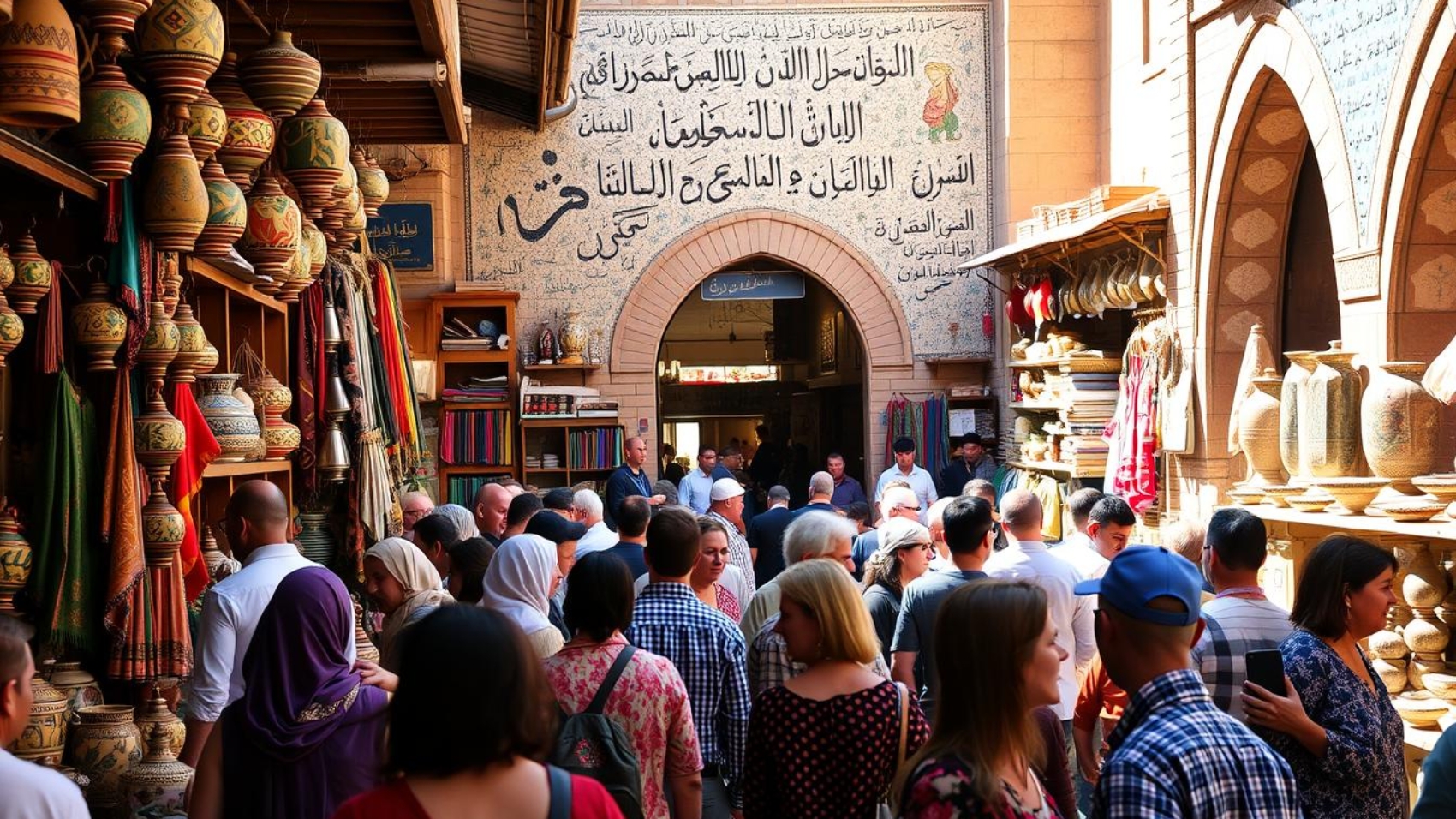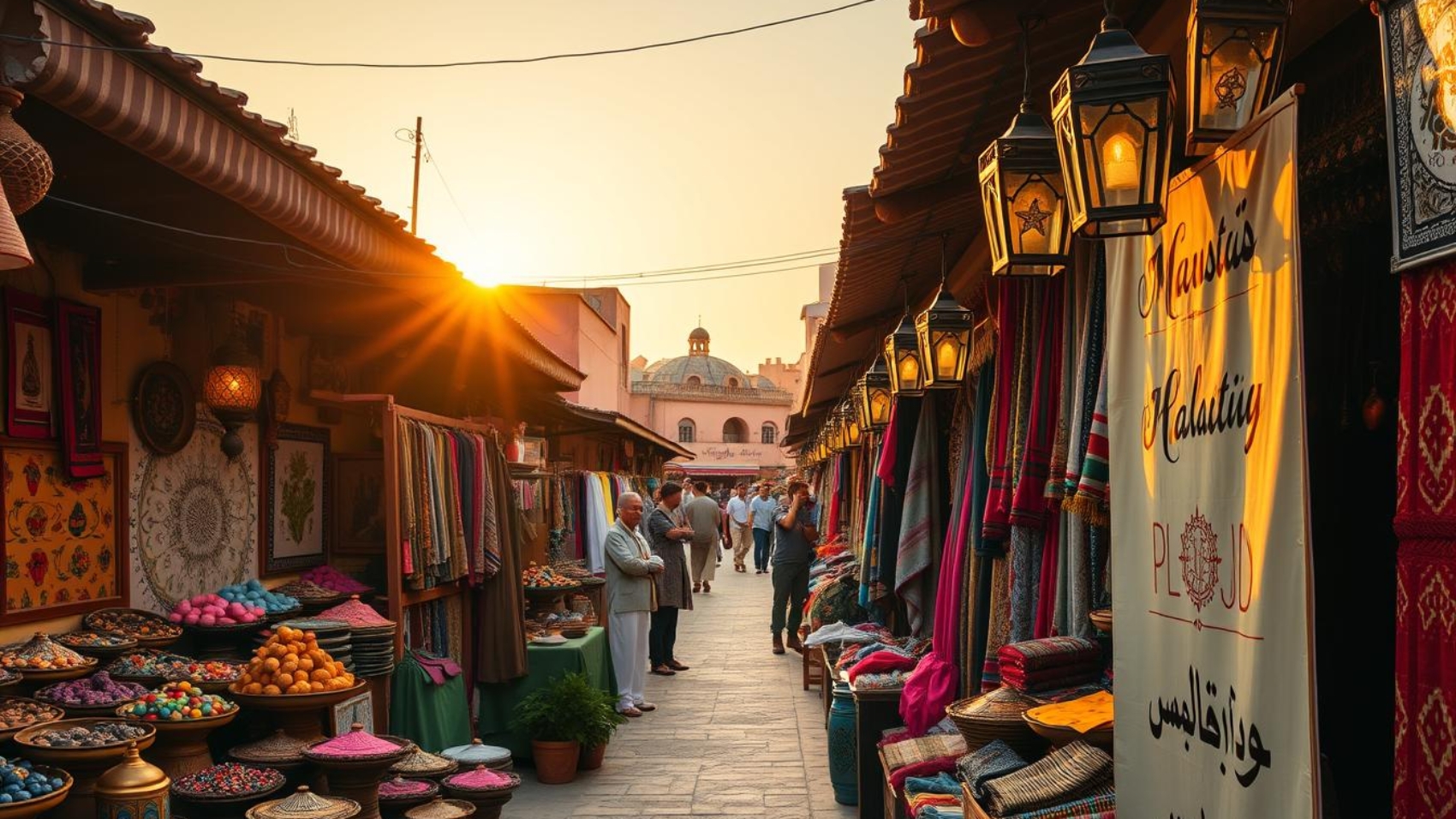Morocco is a fascinating mix of cultures and languages. Its linguistic diversity in Morocco comes from its rich history and geography. Arabic is the main language spoken in Morocco, but Berber languages and French also play important roles.
This mix of languages shows the historical influences on Moroccan tongues. It also highlights the different identities within Moroccan society. Let’s explore the unique traits of the languages found across this vibrant nation.
Overview of Morocco’s Linguistic Landscape
The linguistic landscape of Morocco is a rich tapestry. It is woven from various historical language influences and geographic language variations. This blend shows the many civilizations that have passed through the region over centuries.
From the Phoenicians to the Romans, and later the Arabs and French colonizers, each culture has left its mark. They have all contributed to Morocco’s unique linguistic identity.
Historical Influence on Language
Throughout its history, Morocco has seen many migrations and conquests. This has led to dynamic interactions among diverse language groups. Arabic became prominent with the arrival of Islam.
Berber languages, including Tamazight and Tachelhit, have also kept their importance in many regions. French emerged as a significant language during the colonial era. It has influenced education, business, and government.
Geographical Diversity
The geographic landscape of Morocco is diverse. It has mountain ranges, coastal regions, and vast deserts. These areas foster distinct dialects influenced by local cultures.
In urban centers like Casablanca and Marrakech, a fusion of languages is common. Rural areas often preserve traditional dialects. This shows the identities and histories of different communities.
Official Languages of Morocco
Morocco has two main official languages. Knowing these languages helps us understand the country’s culture and education.
Arabic as the Official Language
Modern Standard Arabic is the top official language in Morocco. It’s used in government and schools. Arabic is everywhere in daily life, from TV to official talks.
Arabic shows Morocco’s deep history and culture. It’s key to the nation’s identity.
The Role of Berber Languages
Besides Arabic, Berber languages are also official. They help keep Morocco’s native cultures alive. This move boosts linguistic diversity and cultural heritage.
Berber languages mean a lot to many Moroccans. They help people feel connected to their roots. So, both Arabic and Berber are crucial in schools and daily talks.
What Language is Spoken in Morocco?
Morocco’s language mix shows its deep culture. Arabic is the official tongue. But, Berber dialects and French are also key in daily talks. Knowing these languages helps us see Morocco’s unique identity.
Common Languages Across Different Regions
In cities like Casablanca and Marrakesh, French and English are big. They’re used a lot in work and social life. But, in the countryside, Arabic and Berber are more common. This shows how different languages shape Morocco.
Multilingualism in Urban vs. Rural Areas
Urban and rural areas have their own language mix. Cities mix languages, creating a place where many cultures meet. Rural areas keep traditional tongues but also welcome new ones. This mix makes Morocco’s language scene lively and diverse.
Minority Languages and Their Impact
Minority languages in Morocco are key to the country’s linguistic diversity. French and Spanish, unlike Arabic and Berber, show Morocco’s history and geography. They have unique influences.
French as a Lingua Franca
French is a common language in Morocco. It’s used in business, education, and government. This shows the lasting effect of French colonial rule.
Many Moroccans speak both Arabic and French. They switch between them in everyday talks.
French is more than just a language. It connects people in schools and work places. Many students go to French-speaking schools, both in Morocco and abroad.
Spanish in Northern Morocco
Spanish is big in northern Morocco, especially in Tangier and Tetouan. It’s not as common as French but still has a strong cultural impact. This connects people to Spain’s history.
People in these areas often speak Spanish and Arabic. Spanish is used in tourism and trade. This shows Morocco’s rich linguistic diversity.
Cultural Significance of Language in Morocco
Language in Morocco is more than just talking. It’s woven into the country’s traditions and arts. It shows a strong bond to identity and heritage. Different languages carry the nation’s values, beliefs, and history.
Language in Moroccan Traditions and Arts
In Morocco, language is key for sharing stories and keeping memories alive. Poetry, *music*, and sayings are filled with words that share social values and feelings. Traditional songs and shows often use local dialects, showing off local customs and traditions.
The Role of Language in Moroccan Identity
Language shapes *Moroccan identity*, bringing people together. Arabic and Berber languages mix, creating a rich cultural identity. This mix shows personal stories and strengthens community bonds, making everyone feel connected.
Language Education in Morocco
Language education in Morocco is key for the future of its youth. The country’s policy aims to give learners the skills needed for the global world. It focuses on teaching Arabic, French, and English.
Language Policy in Educational Institutions
In Morocco, Arabic is the main language taught in schools. French is also important for higher education and jobs. Schools are starting to teach English too, seeing its value in the world.
Learning English as a Foreign Language
Learning English in Morocco is becoming more popular. It’s seen as crucial for the economy and culture. Schools are adding English to their programs, showing Morocco’s aim to stay competitive globally.
Challenges and Opportunities in Moroccan Linguistics
Morocco’s language scene is facing big hurdles in keeping its many languages alive, especially the indigenous ones like Tamazight. The fast pace of modern life and global trends are making these languages less common among the young. To tackle these issues, we need smart plans that involve schools and local communities.
Preservation of Indigenous Languages
There are many efforts to keep indigenous languages alive. These include creating educational programs and cultural events that highlight these languages. It’s crucial to teach the value of these languages in schools to keep them relevant.
As cities grow, the danger of losing these languages grows too. We need new ways to protect them for the future.
The Future of Language in Morocco
The future of language in Morocco is a mix of modern trends and keeping language diversity. With the right policies and community projects, there’s a chance to focus more on saving indigenous languages. This will help fight against the dominance of other languages and make Moroccan culture richer for the next generations.
Conclusion
Exploring languages in Morocco shows a rich mix of cultures. Arabic, Berber languages, French, and Spanish blend together. This mix highlights Morocco’s deep cultural heritage and the role of language in daily life.
Languages in Morocco are more than just ways to talk. They show identity, tradition, and strength in a changing world. Knowing these languages helps us see the depth and value of Moroccan culture. It’s a culture that keeps growing, even with the challenges of today.
It’s crucial to protect and celebrate Morocco’s language diversity. This diversity is key to keeping the country’s rich culture alive. By embracing Morocco’s many languages, we can honor its identity for years to come.
FAQ
What is the primary language spoken in Morocco?
Arabic, specifically Modern Standard Arabic, is the main language in Morocco. It’s used in government and formal talks.
Are there other languages spoken in Morocco?
Yes, besides Arabic, people speak Berber dialects like Tamazight and Tachelhit. French is also widely used, especially in cities.
How does geographical diversity affect language in Morocco?
Morocco’s varied landscapes lead to different languages and dialects. Arabic and Berber are common in rural areas. In cities, French and English are more used.
What is the significance of Berber languages in Morocco?
Berber languages are key to Morocco’s culture. They show the country’s indigenous roots. They are also a second official language, helping to keep Berber culture alive.
Why is French considered a lingua franca in Morocco?
French is important because of Morocco’s colonial past. It’s used in business, government, and schools. This helps people from different backgrounds communicate.
Is Spanish spoken in Morocco?
Yes, in northern Morocco, especially in Tangier and Tetouan. This shows the area’s historical ties and regional connections.
How does language influence Moroccan identity?
Language is vital in shaping Moroccan identity. It reflects the country’s culture, history, and values. It connects people through traditions, literature, and arts.
What is the role of English in Moroccan education?
English is becoming more common in schools. It prepares students for the global world. It helps them communicate internationally.
What challenges do indigenous languages face in Morocco?
Languages like Tamazight face challenges from globalization and urbanization. But, efforts to teach and celebrate these languages are underway.
What initiatives exist to preserve Morocco’s linguistic diversity?
Morocco has many efforts to keep its languages alive. Educational policies and cultural programs promote indigenous languages. They celebrate Morocco’s rich linguistic heritage.



